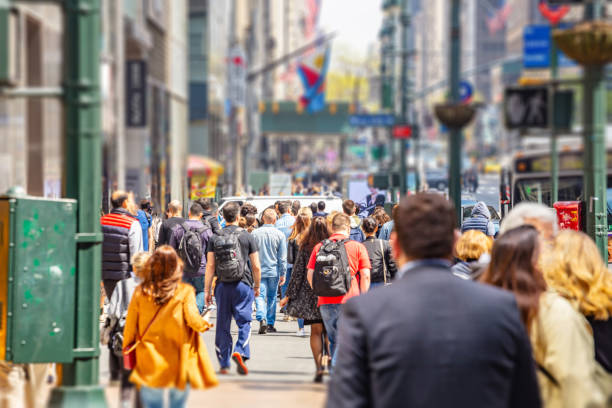
Anxiety in the City That Never Sleeps
New York City is a place of paradoxes—fast-paced yet isolating, opportunity-rich yet relentlessly demanding. For many, it is a city of dreams; for others, it is a pressure cooker. From the vantage point of a psychiatrist, NYC presents a unique environment where anxiety disorders not only thrive but often evolve in distinct ways.
Anxiety is the most common mental health disorder in the United States, and in NYC, its prevalence seems amplified. While national surveys estimate that nearly 20% of American adults experience an anxiety disorder each year, mental health professionals in New York observe an even more intense burden. The city’s speed, density, and socioeconomic inequalities all converge to create a mental health terrain that is both rich in diversity and deeply stressful.
Anxiety in NYC often wears different masks: the startup founder navigating investor expectations, the immigrant family juggling work and documentation stress, the subway commuter experiencing panic at rush hour, or the Columbia student facing academic and existential pressure. The external environment—clanging sirens, cramped living spaces, and the unspoken demand to “make it”—can easily become internalized as chronic worry, insomnia, or even somatic symptoms like chest pain or gastrointestinal issues.
Psychiatric Understanding of NYC-Specific Triggers
From a clinical standpoint, psychiatrists categorize anxiety into subtypes—generalized anxiety disorder (GAD), panic disorder, social anxiety disorder, and others—but in NYC, these categories often blend together. Generalized anxiety, for instance, might stem from a combination of job insecurity, unaffordable rent, and social isolation. Panic disorder may be triggered by overstimulation in crowded subways or elevators. Social anxiety is exacerbated by the pressure to network and perform in high-stakes social environments.
Psychiatrists in NYC often observe a heightened sensitivity to status anxiety—a fear of falling behind professionally, financially, or socially. This form of anxiety frequently manifests in high-functioning individuals who are outwardly successful but inwardly plagued by imposter syndrome, fear of inadequacy, and a relentless internal critic.
The Role of Environment: A Double-Edged Sword
Environmental psychiatry suggests that one’s surroundings can significantly influence mental health. In NYC, the constant noise, light pollution, and sensory overload contribute to overstimulation of the amygdala—the brain’s fear center. The very infrastructure of the city, designed for speed and scale, can inadvertently foster dysregulation of the nervous system.
Conversely, New York’s diversity and access to mental health resources can be protective factors. The city is home to world-renowned psychiatric hospitals, cutting-edge research institutions, and progressive community mental health programs. Telepsychiatry and community-based therapy have become more accessible post-COVID, making treatment more feasible for those who would otherwise be deterred by stigma or cost.
Coping Mechanisms: Psychiatric Interventions and Urban Adaptations
Psychiatrists working in NYC are increasingly tailoring interventions to reflect the city’s complexity. Standard treatments—cognitive-behavioral therapy (CBT), medication management with SSRIs or SNRIs, and mindfulness-based therapies—are often supplemented with lifestyle coaching. Emphasis is placed on boundary setting, digital detox, and reconnecting with green spaces such as Central Park or the Hudson River waterfronts.
Interestingly, psychiatrists are also noticing the therapeutic value of NYC’s own culture: art, music, community engagement, and spiritual practices often provide critical emotional grounding. Some psychiatric clinics now incorporate expressive arts therapy or urban nature therapy, bridging traditional medicine with local culture.
Frequently Asked Questions About Anxiety in NYC
New York’s noise, pace, density, and high cost of living create chronic stress that can overstimulate the nervous system. Many people feel like they’re in a constant state of urgency, which contributes to anxiety symptoms even when there’s no immediate threat.
Yes. Crowded, enclosed, and overstimulating environments like subways or elevators can trigger panic or anxiety, especially for those with sensory sensitivity or past trauma. These are common triggers in NYC and are treatable through therapy and, when appropriate, medication.
Status anxiety refers to the fear of not keeping up socially, professionally, or financially. In NYC, where competition and visibility are intense, many high-functioning individuals feel persistent pressure to achieve or perform. This often leads to burnout or imposter syndrome.
Absolutely. Therapy can help you process external pressures and develop internal tools to manage them. Techniques such as CBT, mindfulness, and grounding exercises are especially effective for navigating city-related stress.
Not always, but often anxiety benefits from a long-term treatment plan—whether that includes medication, therapy, or both. Some people need medication only during a particularly stressful phase of life, while others may need ongoing support to manage chronic symptoms. A psychiatrist will help tailor a plan to your needs, with regular check-ins to evaluate progress and adjust over time.
Living in New York City means navigating constant stimulation, competition, and complexity. If anxiety is interfering with your peace of mind or your ability to show up fully in life, you don’t have to face it alone. Psychiatric care can offer both insight and relief—through meaningful connection, tailored treatment, and a plan that respects the demands of urban life while helping you manage them more effectively.
Dr. Anna Wachtel, MD
Psychiatrist – Upper East Side, NYC
📞 (212) 534-8816
Offering in-person and telepsychiatry sessions for anxiety, life transitions, and emotional wellness in the urban landscape.